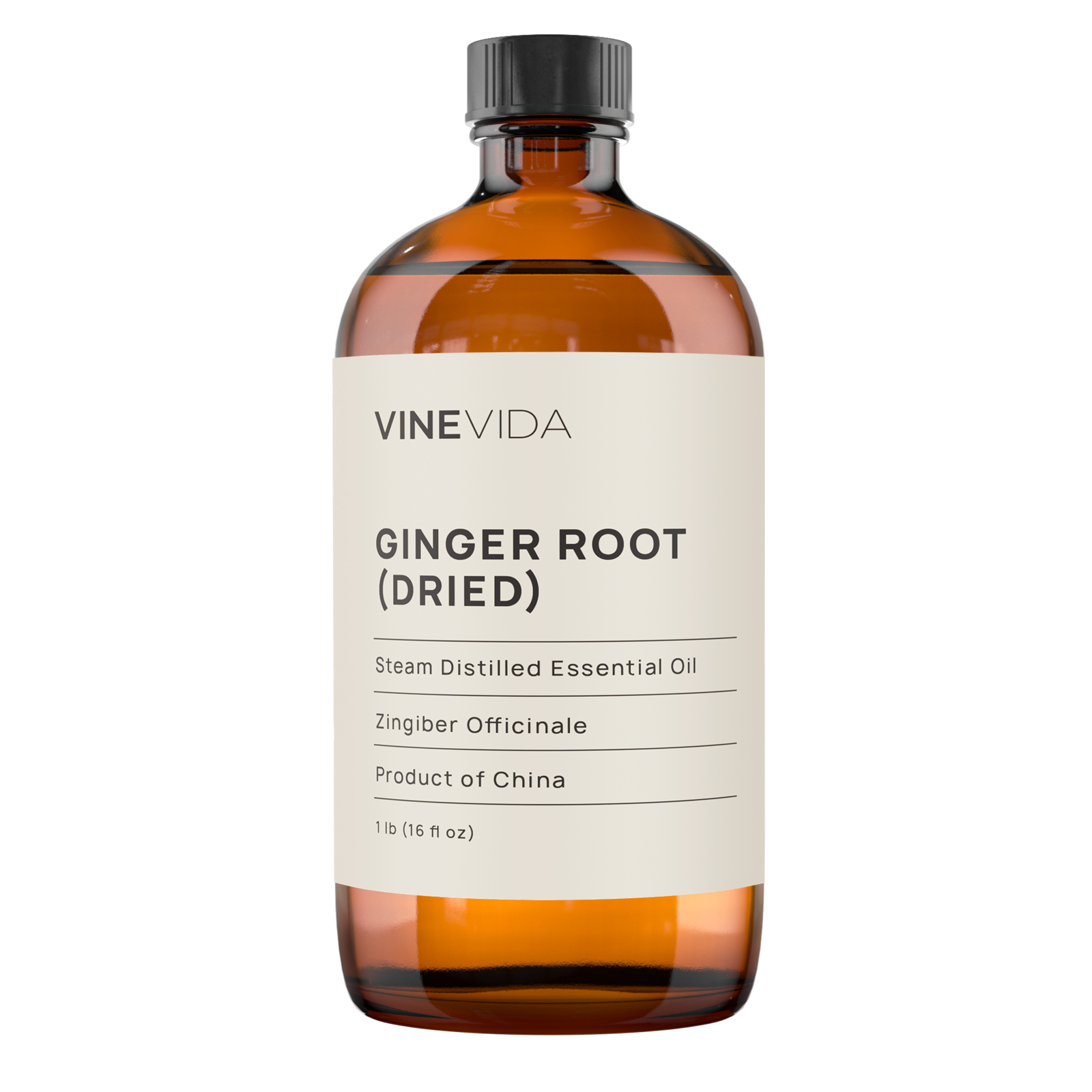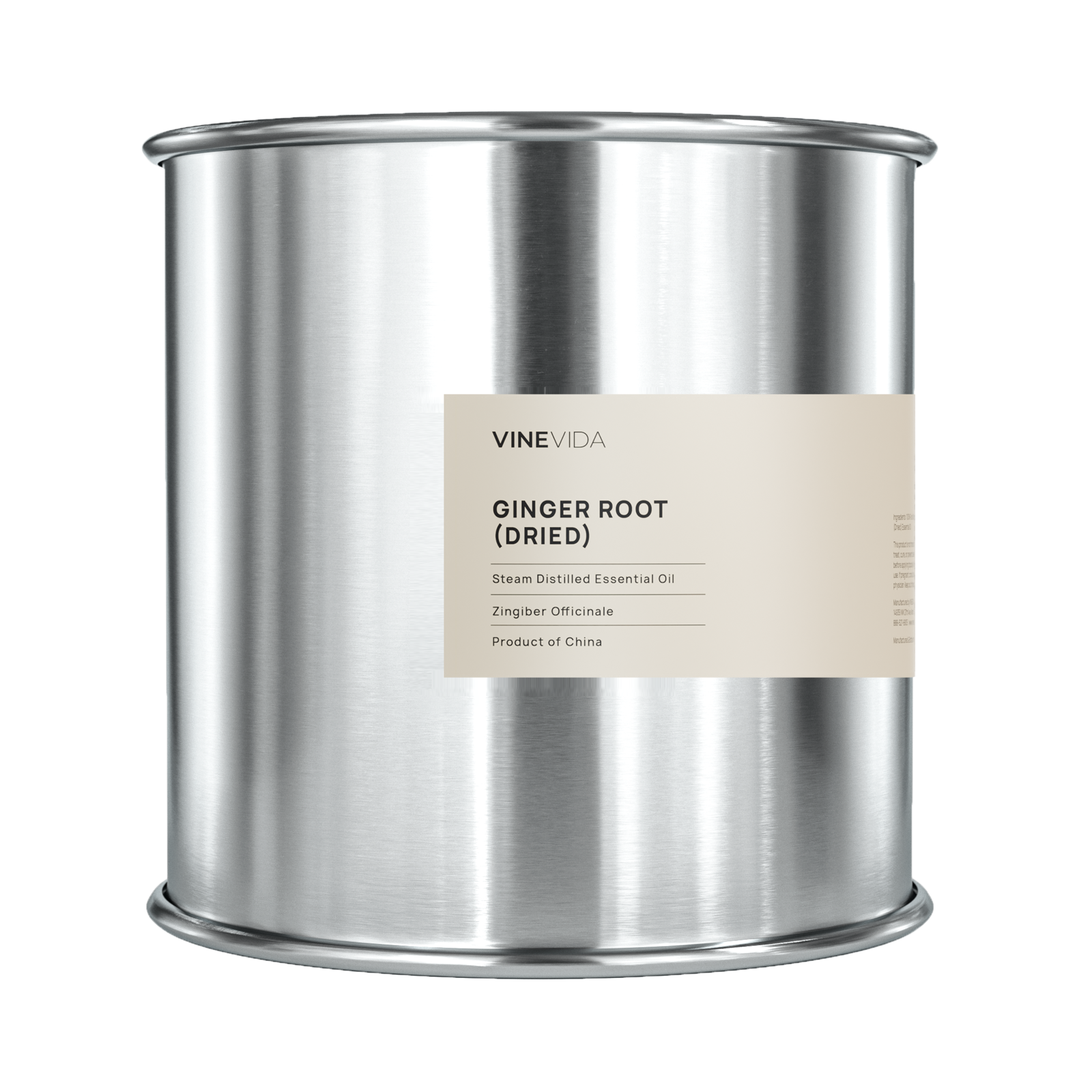Scientific Name: Zingiber Officinale
Origin: China
Plant Part: Root
Scent: Earthy, Woody, Warm, and Slightly Peppery/Spicy
Color: Light Yellow
Consistency: Thin
Perfumery Note: Base
Initial Aroma Strength: Medium Strong
Extraction Method: Steam Distilled
Dried Ginger Essential Oil: Uses, Benefits, and Blends
If you’re looking to add a little spice to your life, look no further than our dried ginger essential oil! Ginger is full of antioxidants and anti-inflammatory agents, making it a fabulous addition to DIY soaps and candles. It can also add a little zing to your aromatherapy practice, offering up a festive fragrance that not only smells great but can also help combat nausea and indigestion. You can also incorporate ginger oil into massage therapy, using it to help soothe aching muscles and joints.
Ginger is one of the most famous spices in the world. Native to Southeast Asia it is part of the Zingiberaceae family, which also contains the spices cardamom and turmeric. Historically speaking, ginger is one of the oldest oils around, but it is no longer wild. Now, ginger is what we call a cultigen, meaning it has been adapted by human action to make it what it is today. Dried ginger essential oil actually comes from the rhizome of the ginger plant, rather than the root. Despite this, you will still see it called ginger root as another common name. Popular dried ginger essential oil uses include soothing stomach upset, relief of aches and pains, and use as a fragrancing agent.
Component Breakdown of Dried Ginger Essential Oil
- Zingiberene: This sesquiterpene is the constituent responsible for the characteristic ginger flavor and aroma
- Camphene: One of the most common terpenes, camphene is a common food additive. It also plays a role in the preparation of certain fragrances.
- b-phellandrene: A monoterpene and an organic plant metabolite. With an odor similar to citrusy peppermint, phellandrene is common in many fragrances.
- a-Pinene: Another common terpene, a-Pinene is prevalent in many coniferous trees. Research indicates pinene to be antimicrobial and antibacterial.
- Borneol: Borneol is a terpene derivative natural to many plants. It is common to see this component in use in Chinese Medicine, and it is also a natural insect repellent
- 1,8 Cineole: The more common name for cineole is eucalyptol. As the name indicates, it is the main constituent in eucalyptus oil. Cineole is a colorless monoterpenoid with the characteristic minty aroma of eucalyptus and cooling properties.
- B-Elemene: Beta elemene is a sesquiterpene. Currently, studies are underway to look at b-elemene as a potential chemotherapy drug. In China, it is already approved for adjunct treatment of some cancers.
- ar-Curcumene: Plant metabolite
-
B-sesquiphellandrene: Another plant metabolite, b-sesquiphellandrene is classified as a sesquiterpenoid.
Wholesale Uses of Dried Ginger Essential Oil
In addition to being a common ingredient in many (delicious) dishes, this aromatic spice has other benefits to offer:
Combat Nausea
One of the key components of dried ginger oil, zingiberene, can potentially help relieve nausea. Current studies indicate that when inhaling dried ginger essential oil, test subjects suffered less nausea and vomiting than the control group.
Ginger Oil for Soap Making

Ginger oil acts as an accelerant when creating soap. This means it helps soaps harden faster. Depending on which type of soap you want to make, this can often be an asset! If you are making a soap that requires a thick trace, then dried ginger essential oil can be a great addition. Plus, ginger oil is high in antioxidants, which means it may help prevent damage from free radicals!
Dried Ginger Essential Oil for Hair
Research on ginger oil and the effects it has on hair is currently limited. However, many people claim that using dried ginger essential oil for hair not only promotes growth but can address itching and dandruff. Drop us a comment if you or someone you know has any experience with using ginger oil for hair!
Massage Therapy
Dried ginger essential oil contains anti-inflammatory and antioxidant properties. Certain scientific studies show that ginger may be an effective way to treat symptoms and chronic pain resulting from inflammatory diseases. Try adding a few drops of ginger oil to your favorite massage base, and rub it into sore muscles and joints.
Dried Ginger Essential Oil Blends: Best Suitable Oils
The aromatic, spicy aroma of ginger blends well with many different types of oils. Try combining it with jasmine or ylang ylang for a tropical vibe. For a more festive feel, combine ginger with cinnamon and clove bud oil. Other great options include sweet orange, rosemary, frankincense, and lavender.
Check out more: Ginger Essential Oil Blends.
Precautions
Never ingest essential oils. If you wish to ingest ginger to help ease nausea there are specific teas and tablets meant for internal use. When it comes to using dried ginger oil topically it is necessary to dilute it first. Use 3-4 drops of oil for every ounce of carrier oil to start with, as it is a hot oil and can be more potent than others. We also suggest doing a small patch test 24 hours in advance.
Flash Point
66 °C
Conclusion
Ginger is a versatile spice that can be used in many different ways. Dried ginger essential oil can work as a natural treatment for nausea and indigestion, as well as helping to relieve pain from sore muscles and joints. There may also be benefits of dried ginger essential oil for the skin, as it is high in antioxidants and often found in commercial skincare products. If using ginger topically be aware that it is a warming oil, and ensure you use proper dilution methods.
You may also like
Recently viewed















 IFRA Statement
IFRA Statement


















